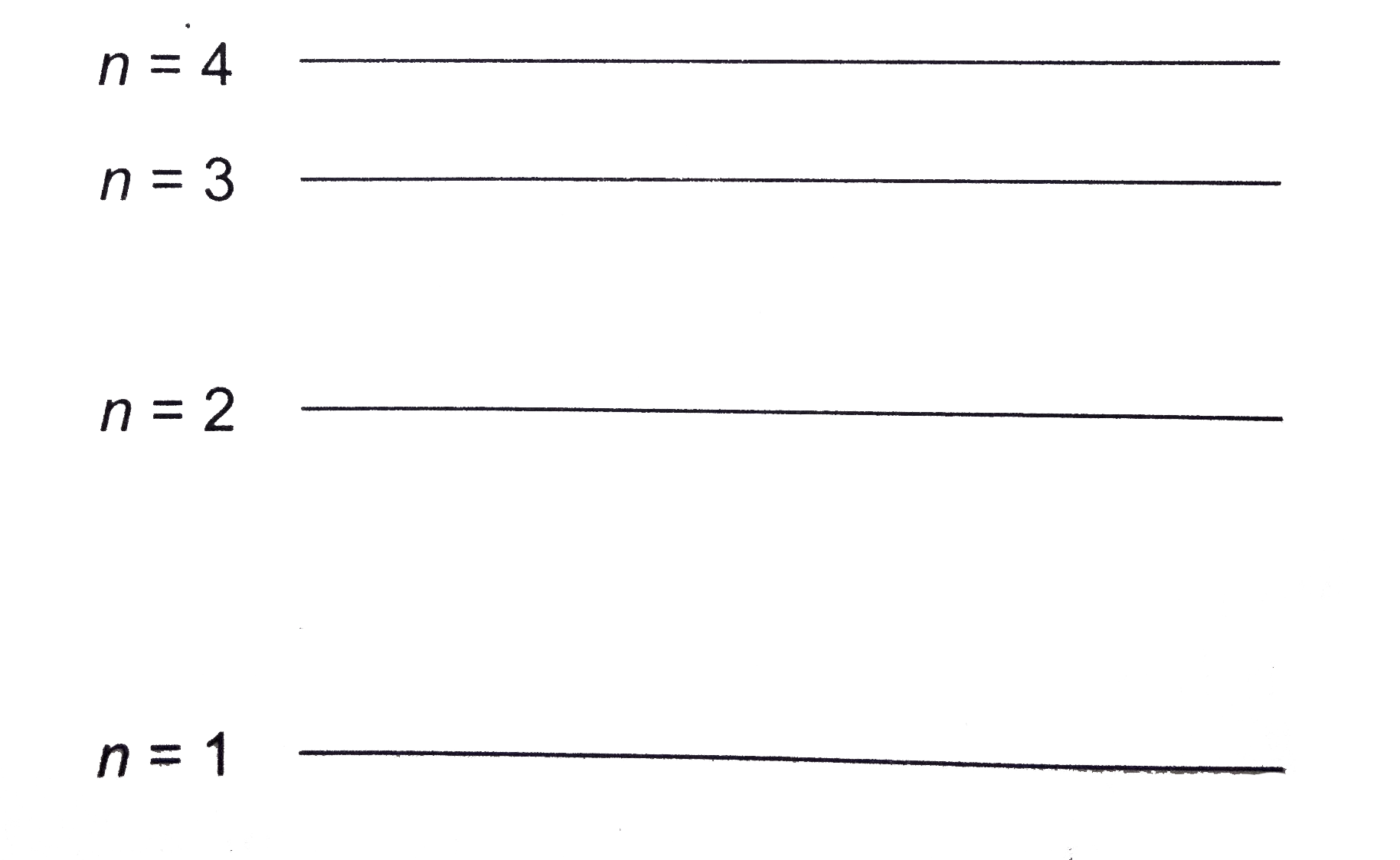Hydrogen gas in the atomic state is excited to an energy level such that the electrostatic potential energy of H-atom becomes −1.7eV. Now, a photoelectric plate having work function w=2.3 eV is exposed to the emission spectra of this gas. Assuming all the transitions to be possible, find the minimum de-Broglie wavelength of the ejected photoelectrons.
U=-1.7 eV
E=U2=−0.85eV
En=−13.6n2eV
−0.85=−13.6n2⇒n2=16
n=4

Six transitions 4→1,4→2,4→3,3→2,3→1,2→1ΔE>2.3eV
4→3,ΔE=0.66eV
4→2,ΔE=2.55eV
4→1,ΔE=12.75eV
Maximum K.E. of ejected electrons is possinle in 4→1ΔE=ϕ+Kmax
12.75=2.3+Kmax⇒Kmax=10.45eV
λd=h√2mKmax=6.6×10−34√2×9.1×10−31×10.45×1.6×10−19
=0.38 nm
Topper's Solved these Questions
Similar Questions
Hydrogen gas in the atomic state is excited to an energy level such that the electrostatic polential energy becomes −3.02eV
Now, the photoelectric plate hoving W=4.6 eV is exposed to the emission spectra of this gas. Assuming all the transition of be possible, find the minimum de-Broglie wavelength of ejected photoelectrons.
View SolutionAn electron, in a hydrogen like atom , is in excited state. It has a total energy of -3.4 eV, find the de-Broglie wavelength of the electron.
View Solution
Knowledge Check
If the total energy of an electron in a hydrogen atom in excited state is - 3.4 eV, then the de Broglie wavelength of the electron is
A6.6×10−12 mB3×10−10 mC6.6×10−10 mD9.3×10−12 mIf the total energy of an electron in a hydrogen like atom in an exited state is −3.4eV , the the de-Broglie wavelength of the electron is :
A6.6×10−10mB3×10−10mC5×109mD9.3×10−12m
A glass tube has Be+++ ions excited to their second excited state. The radiation coming out of this tube is incident on a metal plate having work function f=5eV. Find the minimum de-Broglie wavelength of emitted photoelectrons.
View SolutionPhoton having energy equivalent to the binding energy of 4th state of He+ atom is used to eject an electron from the metal surface of work function 1.4eV. If electrons are further accelerated through the potential difference of 4V then the minimum value of De-brogile wavelength associated with the electron is:
View SolutionAn electron , in a hydrogen-like atom, is in excited state. It has a total energy of -3.4 eV. Calculate
(a) the kinetic energy and
(b) the de Broglie wavelength of the electron.
View SolutionAn electron of a hydrogen like atom is in excited, state. If total energy of the electron is -4.6 eV, then evaluate
(i) the kinetic energy and
(ii) the de-Brogli wavelength of the electron .
View SolutionThe energy of seperation of an electron in a hydrogen like atom in excited state is 3.4eV. The de-Broglie wave length (in Å) associtated with the electron is :
View SolutionA photon of energy 4.5eV strikes on a metal surface of work function 3.0eV Find the value of de-Broglie wavelength in A0 of the ejected photoelectron use h√2me=√150A0]
View Solution
